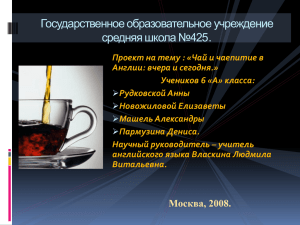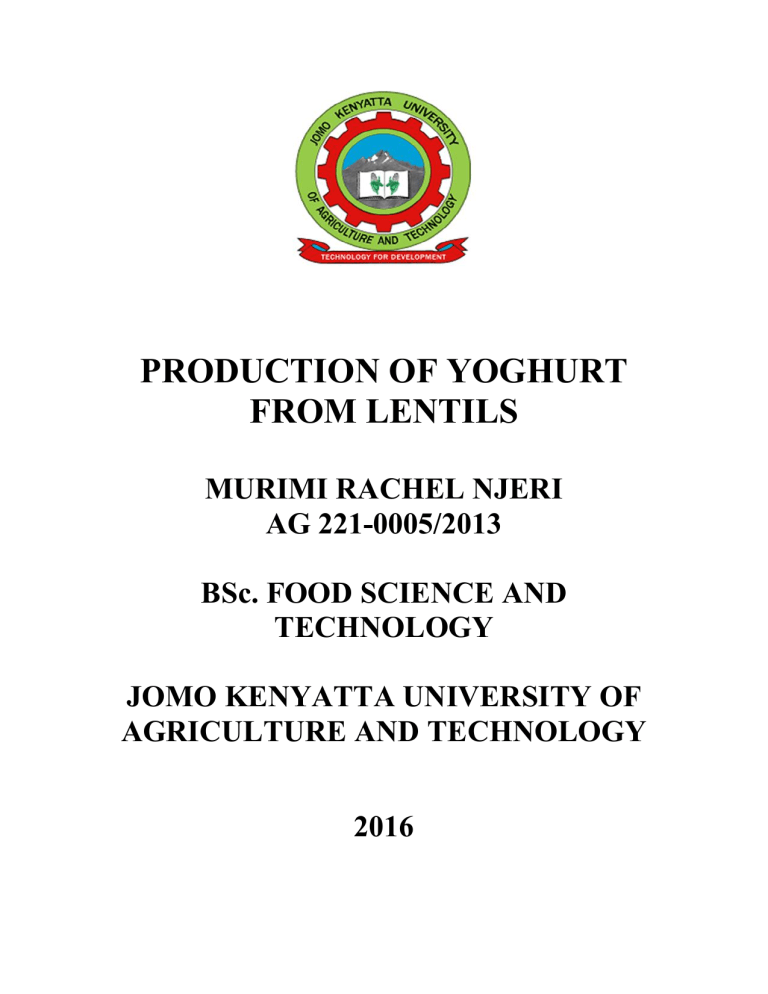
PRODUCTION OF YOGHURT FROM LENTILS MURIMI RACHEL NJERI AG 221-0005/2013 BSc. FOOD SCIENCE AND TECHNOLOGY JOMO KENYATTA UNIVERSITY OF AGRICULTURE AND TECHNOLOGY 2016 ABSTRACT The project involves making yoghurt from lentils “Lens culinaris” which are highly nutritious. It aims at countering the problem of widespread malnutrition in the drier parts of Kenya as well as increasing the utilization of the pulse. This will also provide lactose intolerant people and those with milk protein allergies with a new option for consumption. The activities to be carried out include: Determination of the crude protein content through the Kjeldahl method, measuring pH using a pH meter, determination of the acidity content through titration against sodium hydroxide, mineral analysis by atomic absorption spectroscopy and shelf life studies. The expected outcome of the study is to provide information on a product that can be used in the battle against malnutrition as well as increasing the utilization of lentils. The yoghurt is expected to have a thick consistency and an earthy flavor. Both the milk and yoghurt should have a creamish colour. 1 1. INTRODUCTION 1.1. BACKGROUND INFORMATION Lentils “Lens culinaris” are an edible pulse and are bushy annual plants that belong to the legume family known for their lens-shaped seed. The lentil plant is about 40 cm tall, and the seeds grow inside pods usually about two seeds in each and every pod. 1.1.1 History Lentils are believed to have originated in central Asia, having been consumed since prehistoric times. They are one of the first foods to have ever been cultivated. Lentil seeds dating back 8000 years have been found at archeological sites in the Middle East. Lentils were mentioned in the Bible both as the item that Jacob traded to Esau for his birthright and as a part of a bread that was made during the Babylonian captivity of the Jewish people. For millennia, lentils have been traditionally been eaten with barley and wheat, three foodstuffs that originated in the same regions and spread throughout Africa and Europe during similar migrations and explorations of cultural tribes. Before the 1st century AD, they were introduced into India, a country whose traditional cuisine still bestows high regard for the spiced lentil dish known as dal. In many Catholic countries, lentils have long been used as a staple food during Lent. Currently, the leading commercial producers of lentils include India, Turkey, Canada, China and Syria. Lentils have been part of the human diet since aceramic Neolithic times, being one of the first crops domesticated in the Near East. Archeological evidence shows they were eaten 9,500 to 13,000 years ago. 1.1.2 Growth conditions Lentil plants are slender, semi-erect annuals with compound leaves (4 to 7 pairs of leaflets) with a tendril at the tips. Plants normally range from 12 to 20 in. tall, the taller plants resulting from cool growing season temperatures, good moisture and 2 good fertility. Plants can have single stems or many branches depending upon the population in the field. Flowering begins on the lowest branches, gradually moving up the plant and continuing until harvest. Each flower produces a short pod containing one or two lens-shaped seeds. Flowers can be white, lilac or pale blue in color and are selfpollinated. At maturity plants tend to lodge because of their weak stems. Lentil produced in North America has larger seeds than that from India and the Near East. The seeds (2 to 7 mm in diameter) come in colors of tan, brown, or black, and some varieties produce purple or black mottled seeds. Lentil seed number varies from 15,600 to 100,000 seeds/lb. Environment Requirements Climate: Lentil is adapted to cool growing conditions, and the young plants are tolerant of spring frosts. This allows for early spring planting dates. Lentils have been grown extensively in the semi-arid parts of the world, where they have slightly lower yields, but good seed quality. High humidity and excessive rainfall during the season encourages vegetative growth, which prevents good yield and can reduce seed quality. 300-500 mm of annual rainfall will produce high yields of good quality seed. Excessive drought and/or high temperatures during the flowering and pod-fill period also reduce yields. Soil: Lentil is adapted to all soil types, from sand to clay loam, if there is good internal drainage. Lentil does not tolerate flooded or waterlogged soils, and does best on deep, sandy loam soils high in phosphorus and potassium. Good drainage is required, because even short periods of exposure to waterlogged or flooded field conditions kill plants. A soil pH near 7.0 is best for lentil production. Seed Preparation and Germination: Unless nodulated field pea or lentil has been grown recently on a field, the seed should be inoculated with Rhizobium leguminosarum just prior to planting (within 24 hours). Follow the instructions for inoculation, and protect treated seed from high temperatures and drying winds until planted. Various forms of inoculant are available, some of which can be placed in the furrow with the seed. 3 Good quality lentil seed does not need to be treated with insecticides or fungicides, because it germinates rapidly and seedlings emerge quickly. Seed treatment compounds can interfere with the nodulation process. Cultural Practices: Seedbed Preparation: A firm, smooth seedbed with most of the previous crop residue incorporated is best for lentil. Uneven surfaces, large clods, rocks or protruding crop residue can interfere with seed placement and complicate later swathing and combining. Seeding Date: Lentil should be seeded in late April to early Mail when small grain is being planted. Later seeding dates produce shorter plants and late maturing pods which increase harvest losses. Method and Rate of Seeding: Lentil should be planted 40cm deep, but this can be increased to 60 mm when the upper layers of soil are excessively dry at planting time. Because of the small seed size of some varieties, lentil cannot emerge if planted too deep or if the soil has crusted extensively. Lentil has hypogeal emergence, which means that the growing point emerges but the cotyledons remain in the soil. Seeding rates vary depending upon seed size, but a target population of 400,000 plants/acre should be reasonable. Because of the fragile growth habit of lentil and the fact that the crop does not compete well with weeds, the best yields are from fields planted with a grain drill which can ensure proper depth and distribution as well as good seed-soil contact. Because of seed size variation, care must be taken to calibrate the drill properly. Fertility and Lime Requirements: Inoculation with the proper Rhizobium will provide the nitrogen requirements of lentil. However, if available nitrogen is low (organic matter less than 2%), an early nitrogen supplement of about 40 kg/ha is required to sustain the young plants until root nodulation develops. As for most legumes, sulfur needs are medium to high, and responses may be seen on light colored sandy soils where manure has not been applied. 4 Phosphorus and potassium are recommended for maximum yields on soils testing medium or low. Optimum soil tests range 15 to 30 ppm for P and 90 to 120 ppm for K for most soils. Band applications of P may be of some benefit on very low P or high pH (above 7.6) soils. Lime needs for lentil have not been well established. However, it is likely similar to that of other leguminous vegetables - 6.0 on mineral soils and 5.6 on organic soils. Variety Selection: Growers should consider maturity, growth habit, seed size and color as well as yield potential when selecting a variety of lentil. Currently buyers prefer lentils with larger seeds that are light in color and without mottling on the seed coat. Weed Control: Lentil is not very competitive (especially as seedlings) with many of the grasses and/or broadleaf weed species that infest farm fields, so weed control before planting and early in the growing season is critical. Mechanical: Harrowing or rotary hoeing fields after emergence is recommended only if there is a serious weed problem. Because of the slender early stem growth, the plants are easily damaged at this time. If harrowing or hoeing is planned, be sure to use the recommended seeding rates discussed earlier because the plant stand will be reduced slightly along with the weeds. Rotary hoeing is normally done 7 to 10 days after seeding. Chemical: Glyphosate can be used as a preplow treatment to control quack grass. Diseases and Their Control: Ascochyta blight, Sclerotinia (white mold), Fusarium root rot and Rhizoctonia root rot are possible disease problems for lentil. Since no effective treatment is available for these diseases, crop rotation is the most effective method of preventing a disease problem. Avoid faba bean, fieldbean, field pea, mustard, canola, rapeseed, soybean, sunflower, sugar beet and potato in too close a rotation, because these crops are susceptible to the same diseases. Corn and small grains are good rotation crops in conjunction with lentil. Some scientists feel a three to four-year rotation away from 5 lentil is best for reducing disease problems. Always use good quality disease-free seed to prevent introduction of disease into clean fields. Insects and Other Predators: Lentil can be attacked by aphids, thrips, Lygus bugs, seedcorn maggots and wireworms, but major problems from these insects are seldom noted. If a serious problem is developing in a field, you should consult your local Extension office for information about obtaining threshold values and recommendations for control. Harvesting: Lentil should be swathed when plants begin to turn yellow and the lower pods become brown to yellow-brown in color. This will occur within several days and should be carefully watched, as pods can readily shatter. Lentil should be swathed when there is sufficient moisture to toughen the pods. Swathing should not be done during hot, dry periods of the day. Lentil has a weak stalk and tend to lodge badly. This means that low cut is required in order to minimize losses. Windrowing can be a very slow and difficult operation. A dry field surface which is level, firm and free of stones is necessary to reduce harvesting difficulties. A pick-up reel and lifter guards are very helpful when windrowing. A floating cutterbar mounted on a windrower can further minimize windrowing losses and difficulties. Depending on the weather, windrowed lentil may take a week or more to dry down. Since the lentil windrow has no strong stubble to hold it off the ground, air circulation through the windrow is poor. This may result in seed discoloration and mold development during periods of extended wet weather. Lentils are considered dry at 14% moisture content. Combining at this moisture level can result in high losses and damaged seeds. It may be advisable to combine at a higher moisture content of 18 to 20%, and dry artificially. If the field is uniformly mature, it is possible to combine lentil directly. This should only be attempted at moisture levels of 18 to 20%, to prevent excessive preharvest shattering. A combine equipped with a floating cutterbar should be used to minimize header losses. Once in the combine, lentils thresh easily. Compared to wheat settings a slower cylinder speed is necessary to prevent cracking, and the concaves should be set wider. Initial wind and sieve settings for wheat may be used. 6 Drying and Storage: If lentil seed is harvested at moisture contents greater than 14%, it will have to be dried to prevent heating and molding in storage. It is best to let the seed dry down in the field, if the drier plant material can be handled by the combines without major losses due to shattering of the pods. Lentils can be dried in heated air dryers, but a maximum temperature of 110°F is recommended to reduce cracking of seed coats. Natural air drying has advantages over heated air, but proper design of the system is necessary. The design must ensure good airflow through the seed, which usually means that thinner layers of the seed must be used in this process. Yield Potential and Performance Results: Yields vary with variety, management and environmental conditions. Under good research management and excellent growing conditions, lentils may yield up to 500 kg/ha. Yield of lentils can be calculated as follows: Number plants per m2 x pods/plant x seeds/pod x seed mass (g) 100 7 1.2PROBLEM STATEMENT The main issues that this study is trying to combat includes: Widespread malnutrition especially in the drier parts of the country. Underutilization of lentils in Kenya. Lack of milk substitutes for lactose intolerant people and those with milk protein allergies. According to UNICEF, more than 1 million people remain food insecure in Kenya. This includes 239,446 children suffering from moderate acute malnutrition (MAM) and 2,600 children suffering from severe acute malnutrition (SAM) that are receiving treatment every month. The main indicator of childhood malnutrition is stunting—when children are too short for their age due to inadequate intake of the required nutrients over a long period of time. Stunted children have poor physical growth and brain development, preventing them from thriving and living up to their full potential. With an estimated 2 million (26%) stunted children under the age of 5, Kenya is facing a crisis of malnutrition. It mainly affects children from Kitui, Isiolo, Marsabit and Turkana counties. Underutilization can be due to lack of information on potential food uses. Lentils are mainly consumed whole after boiling for about 30-45 minutes. The hard- to cook phenomenon of most legumes due to the hard testa of some of the legumes has led to under-utilization of lentils. The presences of anti-nutritional factors such as phytates which affect digestion and cause flatulence have also limited consumption of lentils by people. Some research studies have shown that removal of the outer testa will reduce some of these effects. Cow’s milk is made up of lots of different components, for example proteins (such as casein and whey), lactose and fat. The allergic reaction happens because the immune system mistakes the proteins in cow’s milk to be a threat. It then releases chemicals such as histamines and others which trigger the signs and symptoms of an allergic reaction. However, lactose intolerance is triggered by the lactose sugar in cow’s milk. In people with lactose intolerance, the digestive system can’t fully digest this milk sugar, because it doesn’t make enough of the lactase enzyme. So instead of being digested and absorbed, the lactose stays in the gut and feeds the gut bacteria, which release acids and gases that cause the symptoms of lactose intolerance. 8 1.3 JUSTIFICATION In order to curb the stated problems, there is a need for the study of production of yoghurt from lentils. This is backed by the countless number of benefits that can be gained from the legumes. Lentils play an important role in human nutrition since they are rich and economical sources of good quality protein, calories, certain minerals and vitamins. They are inexpensive, nutrient dense sources of plant protein that can be substituted for dietary animal protein. They also complement the lack of some protein and micronutrients in most of the highly consumed cereals. Due to the high nutritional content of lentils, malnutrition evident in a large number of children may reduce especially for those that are under 5 years old. Stunting and wasting may therefore become an issue of the past and more children may be able to achieve good cognitive and physical body development allowing them to live upto their full potential. Implications such as immune disorders will also go down and children may be able to enjoy education and their childhood in general. Due to the lack of information of other lentil uses other than consuming them whole, the study aims at providing knowledge on other ways of utilizing the lentils without compromising on their great benefits to human health. This may encourage improved production of lentils in the country which may even reach commercialization levels. It is intended that household utilization of the lentils may increase a well. As an added advantage, the starch and proteins in lentils are very easily digestible and are not known to cause any problems with digestion nor the immune system. Therefore, use of this legume as a hypoallergenic alternative to milk is a good idea for those suffering from lactose intolerance and allergies to the milk proteins; casein and whey. 9 1.4 OBJECTIVES 1.4.1 Main objective The main aim of this study is to make yoghurt from lentils. 1.4.2 Specific objectives The following are the other objectives of the study: 1.To determine the effect of soaking on the antinutritional factors present in lentils. 2. To determine the temperature-time combination required to process lentil yoghurt. 3. To determine the culture to be utilized in making of the lentil yoghurt. 4.To determine the quantities of additives that will make a good and flavourful product. 5.To determine the period of consumption before spoilage microorganisms grow in the lentil yoghurt. 6.To compare the yoghurt qualities of 2 different varieties of lentils. 10 2. LITERATURE REVIEW 2.1 Taxonomy of lentils Kingdom : Plantae Subkingdom : Tracheobionta Superdivision : Spermatophyta Division: Magnoliophyta Class : Magnoliopsida Subclass: Rosidae Order: Fabales Family: Fabaceae Subfamily: Faboideae Tribe : Vicieae Genus : Lens Species : L. culinaris 2.2Types of lentils Lentil colors range from yellow to red-orange to green, brown and black.[1] Lentils also vary in size, and are sold in many forms, with or without the skins, whole or split. They include: 1.Beluga 2.Brown/Spanish pardina 3.French green 4.Puy lentils 5.Dark/Light Green 6.Indianhead 7.Yellow/tan lentils (red inside) 11 8.Red Chief (decorticated yellow lentils) 9.Eston Green (Small green) 10.Richlea (medium green) 11.Laird (large green) 12.Masoor (brown-skinned lentils which are orange inside) 13.Petite crimson/red (decorticated masoor lentils) 14.Macachiados (big Mexican yellow lentils) The most commonly known type of lentils are expounded below; Brown Lentils - This is by far the most common variety of lentil.They can range in color from khaki-brown to dark black, and generally have a mild earthy flavor. They cook in about 20-30 minutes and hold their shape very well. Common varieties are Spanish Brown, German Brown, or Indian Brown. The blackest and tiniest lentils you find are usually Beluga lentils, which have a rich and deeply earthy flavor. Green Lentils - These can be pale green-brown in color with a glossy exterior. They have a somewhat peppery flavor. Green lentils generally take the longest to cook, upwards of 45 minutes, but they keep a firm texture even after cooking. Red Lentils - With colors ranging from orange to red, these are the sweetest and nuttiest of the lentils. They're somewhere in the middle in terms of cooking time and are usually done in about 30 minutes. They tend to get mushy when cooked . 2.2Production World production World lentil production has almost quadrupled since 1980 at an average annual percentage growth rate of 2.9 percent over the period 1980 to 2012. Lentil production for the major lentil producing nations has been trending upwards during the past 7 years, ranging from 2.1 million tonnes (Mt) in 2002-2003 to 12 2.9 Mt in 2009-2010. Among the main producers, production has been trending upwards in Canada, the US, and Australia, but has been highly variable and trending down in India, Bangladesh, Syria and Turkey. In the US, production increased sharply when lentils were first included under the loan program in 2002. Although specific data is not available on the types of lentils grown, an estimated 70% of world lentil production is the red type, 25% green type and 5% brown and other types. Canada and the US are large producers of the green type whereas the rest of the world produces mainly the red type. Canadian lentil production has increased in response to market signals, which has contributed to the diversification of crop production in the Prairie Provinces, especially in Saskatchewan. The increase in lentil production has proven to be valuable in crop rotations which help to control weeds, diseases and insects and improve soil texture and fertility. The higher production has also contributed to the expansion of the pulse crops handling, marketing and processing industry, which has increased employment opportunities in rural areas. The province of Saskatchewan accounts for more than 95% of Canadian lentil production. The balance is produced in Alberta where area is increasing. Canadian production reached a record of 1.51 Mt in 2009-2010. Canada is the main producer of the green type of lentils in the world, accounting for about 75% of world production. Production of the red type has been increasing over the years as the large major importing countries consume mostly the red variety. The production shift towards the red variety reflects the higher demand for the reds over the past several years from the large import countries in the Middle East and Asia and the development of varieties suited to production in Western Canada. The Canadian lentil harvest generally occurs during the period from mid-August to early October. 2.3 Nutrition Profile Lentils are a powerhouse of nutrition. They are a good source of potassium, calcium, zinc, niacin and vitamin K, but are particularly rich in dietary fiber, lean protein, folate and iron. Lentils are considered to be a good source of proteins. This high protein content makes them a significant food source for developing countries and low income people. 13 One cup of cooked lentils has about: 230 calories 18 grams protein 15 grams of fiber 3.5 grams sugar less than 1 gram fat 358 milligrams folic acid (90 percent DV) 1 milligram manganese(49 percent DV) 6.6 milligrams iron (37 percent DV) 356 milligrams phosphorus (36 percent DV) 0.5 milligrams copper (25 percent DV) 0.5 milligrams thiamine (22 percent DV) 731 milligrams potassium (21 percent DV) 71 milligrams magnesium (18 percent DV) 0.4 milligrams vitamin B6 (18 percent DV) 2.5 milligrams zinc (17 percent DV) 1.3 milligrams vitamin B5 /pantothenic acid (13 percent DV)\ DV=Daily Value 2.4 Health benefits 1.Great Source of Fibre Lentils contain both insoluble and soluble fiber and help improve heart, digestive and immune function by carrying waste, excess fat and toxins out of the body. 2. Protects Heart Health Since they are one of the best sources of soluble fibre, lentils are very beneficial for lowing bad cholesterol and preventing heart disease. Researchers have found that diets high in lentils prevent hypertension and tend to produce more favorable cholesterol levels than diets lower in lentils. Maintaining healthy cholesterol levels reduces damage done to your arteries and prevents dangerous plaque buildup, which greatly lowers your risk of having a heart attack or stroke. They are also 14 very low in both fat and sodium, other key factors that make up a heart-healthy diet. Diets lower in sodium favour healthy blood pressure levels, as do the many nutrients that lentils provide like folate, potassium and magnesium. Folate can help to lower homocysteine levels, which is known to be a serious risk factor for heart disease, while magnesium and potassium help improve circulation and carry adequate oxygen and nutrients around the body. 3. Improves Digestive Health With such high levels of dietary fibre, lentils to promote regular bowel movements. The high level of insoluble fiber found in lentils absorbs water in the digestive tract, swelling up and carrying waste out of the digestive tract. This makes lentils a great digestive regulator and helps prevent constipation, IBS(Irritable Bowel Syndrome) inflammatory bowel diseases, and even diarrhoea. 4. Helps Alkalize the Body and Balance Its pH Level Lentils are one of the most alkaline protein sources there is, which is important for balancing the body’s pH level and promoting a healthy gut environment. Lentils help combat the acidic environment of the gut and promote healthy bacterial growth, which is important for nutrient absorption, indigestion, constipation and many other diseases, too. 5. Helps Manage Blood Sugar Levels Research indicates that the high level of soluble fiber found in lentils traps glucose from carbohydrates and slows down digestion. This means lentils can help stabilize blood sugar levels, which is important for preventing energy dips, mood changes, and serious conditions like diabetes, insulin resistance or hypoglycemia. One of the keys attributes of lentils nutrition is their low starch content. Lentils contain only about 35 percent digestible starch, and the remaining 65 percent is classified as resistant starch, the type that essentially escapes digestion and absorption in the small intestines because a high level of lentils’ carbohydrates and glucose cannot be digested in the body. They have a very low impact on blood sugar compared to refined grains and packaged carbohydrates. 15 6. High Source of Plant-Based Protein Lentils are considered one of the best sources of plant-based, high protein foods there is. 7. Can Help You Lose Weight Lentils are low in calories but high in protein and fiber, which helps make you feel full. Another lentils nutrition benefit when it comes to weight loss is that they can help control food cravings for sugar and refined carbohydrates since they help balance your blood sugar levels. 8. Improves Immunity Lentils help prevent deficiencies in critical minerals like iron, folate, zinc and manganese that the body relies on to maintain a strong immune system. 2.5 Antinutritional factors Pulses contain anti-nutritional components that limit their utilization. These components include trypsin inhibitors, phytic acid, tannins and oligosaccharides. Trypsin inhibitors are low molecular weight proteins capable of binding to and inactivating the digestive enzyme, trypsin . Phytic acid lowers the bioavailability of minerals and inhibiting the activity of several minerals. One of the major disadvantages of tannins in lentils is discolouration of the seed. In addition to seed discolouration, tannins bind to proteins through hydrogen binding and hydrophobic interactions, thereby reducing their nutritional quality. They can crosslink with protein by reacting with lysine or methionine making them unavailable during digestion. While some efforts have been directed to minimize their contents in the seeds or to minimize their effects through processes, little information on the effect of varietal and environmental conditions on these antinutritional factors is available. Physical and chemical methods employed to reduce or remove antinutritional factors include soaking, cooking, germination, fermentation, selective extraction, irradiation, and enzymic treatment. 16 The application of a single technique is frequently insufficient for effective treatment and so combinations are commonly employed . Soaking could be one of the methods to remove soluble antinutritional factors which can be eliminated with the discarded soaking solution. However, some metabolic reactions can take place during soaking, affecting the content of some compounds. Cooking generally inactivates heat-sensitive factors such as trypsin and chymotrypsin inhibitors and volatile compounds. Germination has been documented to be an effective treatment to remove antinutritional factors in legumes. It can lower the phytate content depending upon the germination conditions. Changes in the trypsin inhibitor activity and in the phytic acid, tannin, and catechin content of lentils (Lens culinaris var. Vulgaris) were investigated after soaking in distilled water, citric acid, and sodium bicarbonate solutions. The effect of cooking, after the seeds were presoaked in the above-mentioned solutions and both the soaking and cooking solutions were discarded, was also studied. Finally, two varieties of lentils (L. culinaris var. Vulgaris and Variabilis) were germinated for 6 days, and the effect on the trypsin inhibitor activity and the phytic acid, tannin, and catechin contents was also measured. Soaking did not modify the trypsin inhibitor activity, decreased the phytic acid content, and increased the tannin and catechin contents. Cooking the presoaked seed brought about the total removal of trypsin inhibitor activity, a reduction of the physic acid level, and an increase of the content of tannins and catechins. The trypsin inhibitor activity and the phytic acid content showed a large decrease after 6 days of germination, while amounts of tannins and catechins in the two lentil varieties studied increased. 17 METHODOLOGY 3.1. RESEARCH SITE The study is to be conducted at the JKUAT Main Campus laboratories in the Food Science and Technology Department. 3.2 RESEARCH DESIGN The experimental research design is to be used. This is because there are few or no earlier studies to rely upon to predict an outcome. The focus is on gaining insights undertaken when research problems, in this case, underutilization of lentils, are in a preliminary stage of investigation. Exploratory designs are often used to establish an understanding of how best to proceed in studying an issue or what methodology would effectively apply to gathering information about the issue. 3.3 SAMPLING METHOD Sampling method to be used is one whereby the lentils chosen will be purchased from a specific supplier. 3.4 PRODUCT PREPARATION Weigh the sample of lentils. Wash the lentils thoroughly with clean water. Soak the lentils in a small amount of water for a period of 12 hours. The water should slightly cover the lentils. Dispose the water. Blend the lentils with twice the amount of water as lentils until a fine meal is produced and the water looks opaque. Strain the lentil milk using a strainer lined with a cheese cloth. Pasteurize the lentil milk. Cool the milk until a temperature of 45 degrees Celsius is obtained. Add the weighed sugar, stabilizers and culture to the lentil milk. 18 Incubate the yoghurt at 45 degrees Celsius until a thick viscosity is attained or until it has set. Refrigerate the yoghurt. Pack the lentil yoghurt. 19 3.5 LABORATORY METHODS 3.5.1 SPECIFIC METHODS 1) Determination of crude protein using the Kjeldahl method. Materials and reagents Beaker Condenser Volumetric flask Sulphuric acid Sodium hydroxide Anhydrous sodium sulphate Anhydrous copper sulphate PROCEDURE Digestion 1. Weigh approximately 1 g ground sample into digestion flask, recording weight (W). Include reagent blank as check of correctness of digestion parameters. Weigh a second subsample for laboratory dry matter determination. 2. Add 15 g sodium sulfate, 0.04 g anhydrous copper sulfate. Then add 20 mL sulfuric acid. 3. Place flask on bunsen burner adjusted to bring 250 ml water at 25C to boil in 5 min. 4. Heat until white fumes clear bulb of flask, swirl gently, and continue heating for 90 min for copper catalyst . 5. Cool, cautiously add 250 ml distilled water and cool to room temperature . Distillation 1. Prepare titration flask by adding appropriate volume accurately measured acid standard solution to amount of water so that condenser tip is. For reagent blank, 20 pipette 1 mL of acid and add approximately 85 mL water. Add 2 to 3 drops indicator solution. 2. Slowly down side of flask, add sufficient 45% sodium hydroxide solution to make mixture strongly alkali. 3. Immediately connect flask to distillation apparatus and distill at about a temperature set to bring 250 mL water at 25oC to boil in 7.5 min until at least 150 ml distillate is collected in titrating flask. 4. Remove digestion flask and titrating flask from unit, rinsing the condenser tube with distilled water as the flask is being removed. Titration 1. Titrate excess acid with standard sodium hydroxide solution to endpoint and record volume. Titrate the reagent blank (B) similarly. The concentration of hydrogen ions (in moles) required to reach the end-point is equivalent to the concentration of nitrogen that was in the original food. The following equation can be used to determine the nitrogen concentration of a sample that weighs m grams using a xM HCl acid solution for the titration: (5) Where vs and vb are the titration volumes of the sample and blank, and 14g is the molecular weight of nitrogen N. A blank sample is usually ran at the same time as the material being analyzed to take into account any residual nitrogen which may be in the reagents used to carry out the analysis. Once the nitrogen content has been determined it is converted to a protein content using the appropriate conversion factor: %Protein = Factor x %N. 21 2) Determination of viscosity using the Ostwald viscometer. Materials and reagents Distilled water Water bath Funnel Retort stand Stop watch Ostwald Viscometer PROCEDURE 1. Rinse the viscometer with water and place it in position in water bath by carefully clamping one limb. Check that it is vertical using a plumb line 2. Introduce exactly 20 ml (or the volume marked on the viscometer) of water at 20°C into the bulb A with a syringe or pipette. 3. Leave for 5 min to equilibrate, then either apply positive pressure to the wide limb (I) or gentle suction to the other limb (II) until the meniscus rises above the upper graduation mark B. 4. Release the pressure and measure the time for the liquid to flow between the two graduation marks B and C. 5. Repeat the process with the food sample. 3)Determination of acidity using the titration method. Materials and reagents Beaker Volumetric flask Pipette Burette Sodium hydroxide Phenophthalein indicator Food sample 22 PROCEDURE 1. Fill the burette with 0.1 N NaOH solution. 2. Mix the sample thoroughly by avoiding incorporation of air. 3. Transfer 10 ml sample with the pipette in conical flask. 5. Add equal quantity of glass distilled water. 6. Add 2-3 drops of phenolphthalein indicator solution and swirl. 7. Take the initially reading of the alkali in the burette at the lowest point of meniscus. 8. Rapidly titrate the contents with 0.1 N NaOH solution continue to add alkali drop by the drop and stirring the content with glass rod till first definite change to pink colour which remains constant. 9.Note down the final burette reading. Total titratable acidity is therefore calculated using the following formula: % acid = [mls NaOH used] x [0.1 N NaOH] x [100] grams of sample 4)Determination of pH using a pH meter. A pH meter is a scientific instrument that measures the hydrogen-ion concentration in a solution, indicating its acidity or alkalinity. The pH of the yoghurt is monitored due to increase in acidity during fermentation. 5)Analysis of minerals specifically iron using Atomic Absorption Spectrometry and folic acid using High Performance Liquid Chromatography (HPLC) technique. 6)Determination of shelf life using accelerated storage conditions. The food sample is stored at various temperatures and parameters such as changes in microbial counts, pH, titratable acidity and sensory attributes are monitored during storage. 23 SENSORY EVALUATION The sensory evaluation will be carried out using a sensory panel of 10-15 people. The panel will consist of students and workshop technicians. The tests will be used to evaluate the appearance, taste, texture and aroma of both the flavoured milk and yoghurt. STATISTICAL ANALYSIS This will be done using Microsoft Excel and packages such as MaxStat software package that will assist in analyzing the data that will be acquired. EXPECTED OUTCOMES The expected outcome is to provide information on the chemical, physical and nutritional attributes of lentil yoghurt. It is also expected that the knowledge acquired may be implemented in making dairy product substitutes for the lactose intolerant and those with milk protein allergies. It may also provide a new method of utilization of lentil grains at a small scale and even commercial level. The yoghurt is expected to have a thick consistency and a vanilla and/or strawberry flavour. 24 WORK PLAN SEP OCT NOV DEC Sample purchasing and product preparation Shelf life studies Determination of physical and chemical attributes Progress report with project supervisor Determination of nutritional attributes Sensory evaluation Project presentation 25 JAN FEB MAR APR BUDGET ITEM UNITS COST PER UNIT TOTAL COST 1. Lentils 5 kg 350 1750 2. Sugar 2 kg 150 300 3. Culture 1 pkt 1500 1500 4. Stabilizer and starch 5. Flavourings 100 gm each 500 1000 - - 500 6. Chemicals for analysis 7. Packaging bottles - - 3000 - - 500 8150 TOTAL 26 REFERENCES 1. Campos-Vega, R., Loarca-Rina, G., Oomah, B. D., (2010) Minor components of pulses and their potential impact on human health. Food Res Int 43: 461-482. 2. Clarke, H., Khan, T., Croser, J., White, P., Singh, S. P., Lulsdrof, M., Hunbury, C., and Ryan, M. (2005) Temperature tolerance in legumes. In : Kharkwal, M.C. (ed.) Abstracts of Fourth International Food Legume Research Conference (IFLRC IV), 18-22 October, 2005. New Delhi, India, 21. 3. Cubero J. I. (1981) Origin, taxonomy and domestication. In: Webb, C. and Hawtin, G.C. (eds) Lentils. Commonwealth Agricultural bureau, Slough, UK, 15-38. 4. Dilis, V., Trichopoulou, A., (2009) Nutritional and health properties of pulses. Mediterr J Nutr Metab I :149-157. 5. Egan, H., Kirk, R.S., Sawyer, R., and Pearson, D., (1981) Pearson’s chemical analysis of foods. Science 122, 564-572 6. Erskine, W., Adham, Y., and Holly, L. (1989) Geographical distribution of variation in quantitative traits in a world lentil collection. Euphytica 43, 97-103. 7. Food and Agricultural Organization (FAO) (2007) Statistics on lentil. Available at: www.fao.org/site/336. Accessed on : August 9th 2016 8. Jood, S., Bishnoi, S., Sharma, A. (1998) Chemical analysis and physiochemical properties of lentil cultivars. 9. Ladizinsky, G. (1979) The origin of lentil and its wild genepool. Euphytica 28, 179-182. 10. Sarker, A., and Erskine, W., (2006) Recent progress in the ancient lentil. Journal of Agricultural Sciences, Cambridge 144, 1-11. 11. Sarker, A., and Erskine, W., (2009) Lentil :Botany, production and uses. Cambridge 144, 159-176. 12. Savage, G. P., (1988) The composition and nutritive value of lentils. Nutrition Abstracts and Reviews (Series A) 58, 320-334. 13. United States Department of Agriculture (USDA) (2011) USDA National Nutrient Database for Standard Reference, Release 23. Available at: www.ars.usda.gov/research/publications. Accessed on 27th July 2016 14. Williams, J.T., Sanchez, A.M.C., and Jachson, M.T., (1974) Studies on lentil and their variation.I. The taxonomy of the species. Sabrao Journal 6, 133-145. 27 15. Zohary, D., and Hopf, M., (1973) Domestication of pulses in the Old World. Science 182, 887-892. 28
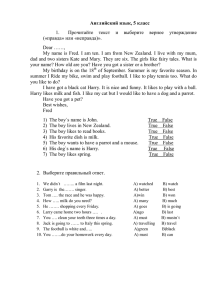
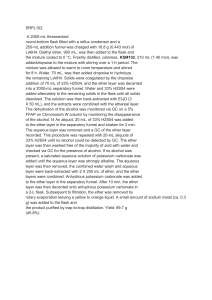
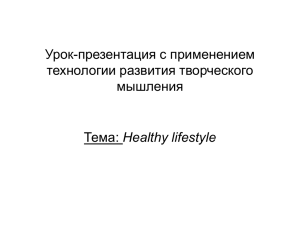
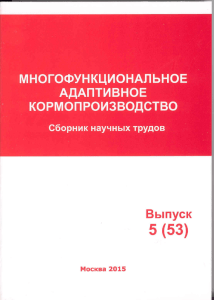
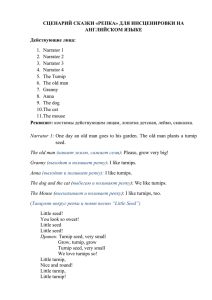

![[Michael C. Pirrung] Handbook of Synthetic Organic(z-lib.org)](http://s1.studylib.ru/store/data/006236139_1-286bb5a91bdd8857ebb85cf974fb798c-300x300.png)
